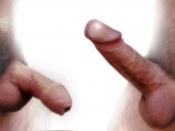According to the 2004 Australian Institute of Criminology report, 18,237 victims of sexual assault applied to the police in Australia in 2003 (Lance & Johnson, 2004, p. 21). Overall, sexual assaults have increased by an average 4% each year since 1995 (Lance & Johnson, 2004, p. 22). The statistics shows that the issues of sexual abuse stay acute for the Australian society.
The present essay presents an integrative rehabilitation programme for the 49-year-old situational nonexclusive non-incestuous androphilic pedophile serving a seven year sentence for the sexual assault of children. Further more, according to Lance and Johnson, there were 90 boys under age 14 per 100,000 population who were sexually victimised in 2003 in Australia (2004, p. 22). Boys made up 33% of sexual assault victims aged under 10 and 20% or less in other age groups (ibid.). Though the data on prepubescent male victims is unavailable, the general trend of sexual perpetrators being familiar with the assaulted individual (74% of cases) speaks on the increase of non-random sexual crimes.
The essay consists of several subparts: first, the identification of the problem; second, the conceptualisation of offending behaviour in regard to children; third, the specification of the treatment programme for the subject identified; and, finally, the rationale for the treatment chosen with referencing to the prior research.
Identification of the problem behaviour
Bert (49 years old) is identified as a paedophile. The client used to be a scout master dealing with boys aged 10-14. He was arrested after numerous former scouts came forward and claimed they had been sexually abused by their leader during scout activities. The offences occurred over a long period of time.
Paedophilia is the aberration of sexual orientation or the type of paraphilia. Referring to the fourth edition of Diagnostic and Statistical Manual of Mental Disorders (DSM-IV)...


